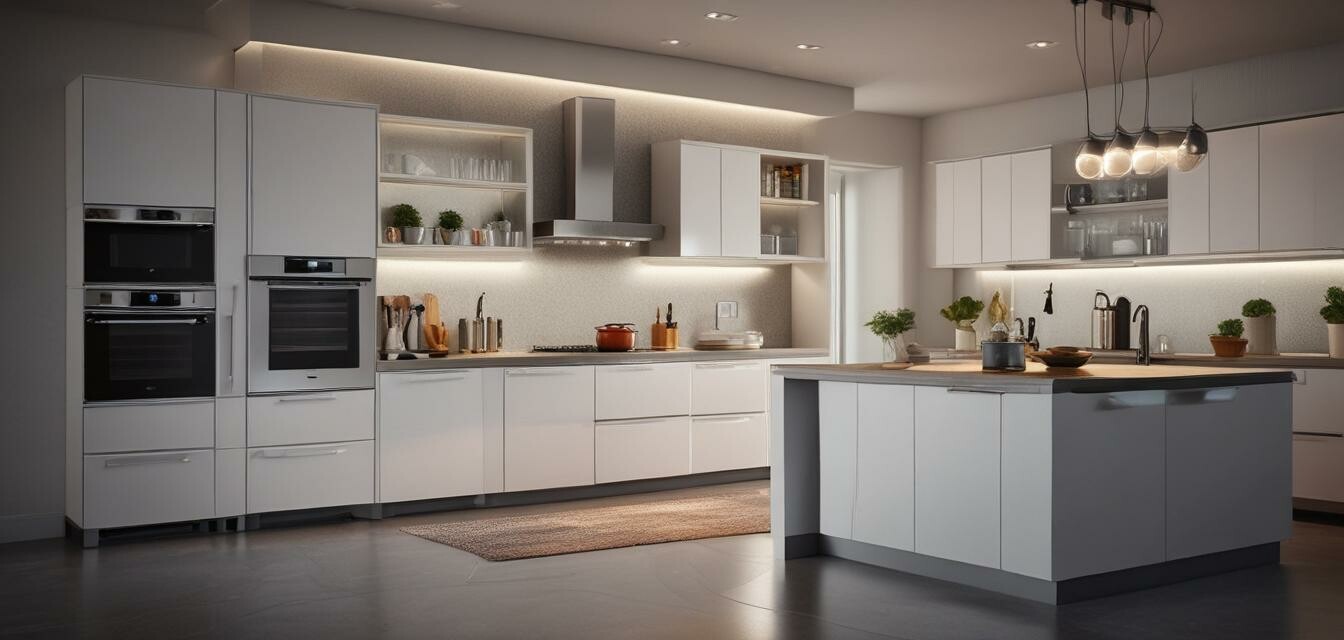
Voice Technology in the Kitchen: What’s Next?
Key Takeaways
- Voice technology is transforming meal preparation and kitchen efficiency.
- Integration with smart home systems enhances user experience.
- Future advancements could include improved AI, making kitchen tasks even easier.
- Stay updated on the latest trends to optimize kitchen functionalities.
As the world moves forward, voice technology emerges as a powerful tool within our smart kitchens. This article explores the latest trends and future possibilities that this technology holds for meal preparation and cooking efficiency.
The rise of voice technology in the kitchen
The integration of voice technology in our daily lives has exponentially increased. From smart assistants like Alexa and Google Assistant to advanced voice-activated kitchen appliances, the kitchen is rapidly becoming a hub for technological innovation.
Current voice technology in kitchen appliances
Let's delve into some areas where voice technology has already begun to make its mark:
| Appliance Type | Voice Functionality | Benefits |
|---|---|---|
| Smart ovens | Set timers, adjust temperatures by voice command | Hands-free cooking, improved precision |
| Touchless faucets | Activate water flow through voice | Increased hygiene, convenience |
| Bluetooth-enabled devices | Connect and control with voice commands | Streamlined kitchen operations, ease of use |
| Smart refrigerators | Check inventory, set reminders by voice | Reduce food waste, smarter shopping |
What’s next for voice technology in the kitchen?
As we look to the future, several advancements are on the horizon that may redefine the kitchen experience:
- Enhanced artificial intelligence (AI): Future developments may entail more advanced AI that can learn cooking preferences, recommend recipes tailored to your taste, and suggest meal plans based on nutritional needs.
- Integrated smart home systems: Imagine controlling your entire kitchen setup through voice commands integrated with your home devices. The sync between kitchen appliances and home automation will allow for a more cohesive experience.
- Voice recognition technology: Improved voice recognition that can decipher different voices and adapt responses based on user preferences will enhance personalization in homes.
Challenges and considerations
With all the advancements come challenges that must be addressed:
- Privacy concerns: Users must be aware of data privacy, as voice devices often require constant listening to accommodate all commands.
- Accessibility: Future technology must cater to all users, including those who may have difficulty using voice commands.
- Dependence on technology: An over-reliance on tech can lead to reduced cooking skills or the inability to perform tasks manually.
Pros
- Improved efficiency during cooking tasks.
- Enhanced personal experience through customizable settings.
- Increasingly intuitive user interfaces, making technology approachable.
Cons
- Potential security vulnerabilities with connected devices.
- Not all tasks may be optimally handled by voice commands.
- Learning curve required for older generations who are less tech-savvy.
Conclusion
Voice technology in the kitchen is not just a passing trend; it is becoming a vital part of how we cook and interact with our appliances. By staying informed about the latest advancements and trends in high-tech kitchen appliances, homeowners can make educated decisions on upgrading their kitchen experiences.
Stay informed and engaged
For those keen on optimizing their kitchen with smart technology, explore other related topics such as Bluetooth-enabled devices that complement voice technology or smart kitchen tips to enhance your cooking and efficiency.
Further reading
Interested in the latest sustainable kitchen technologies? Check out our article on energy-efficient appliances and how they can save you money and support sustainability while you use advanced technologies.